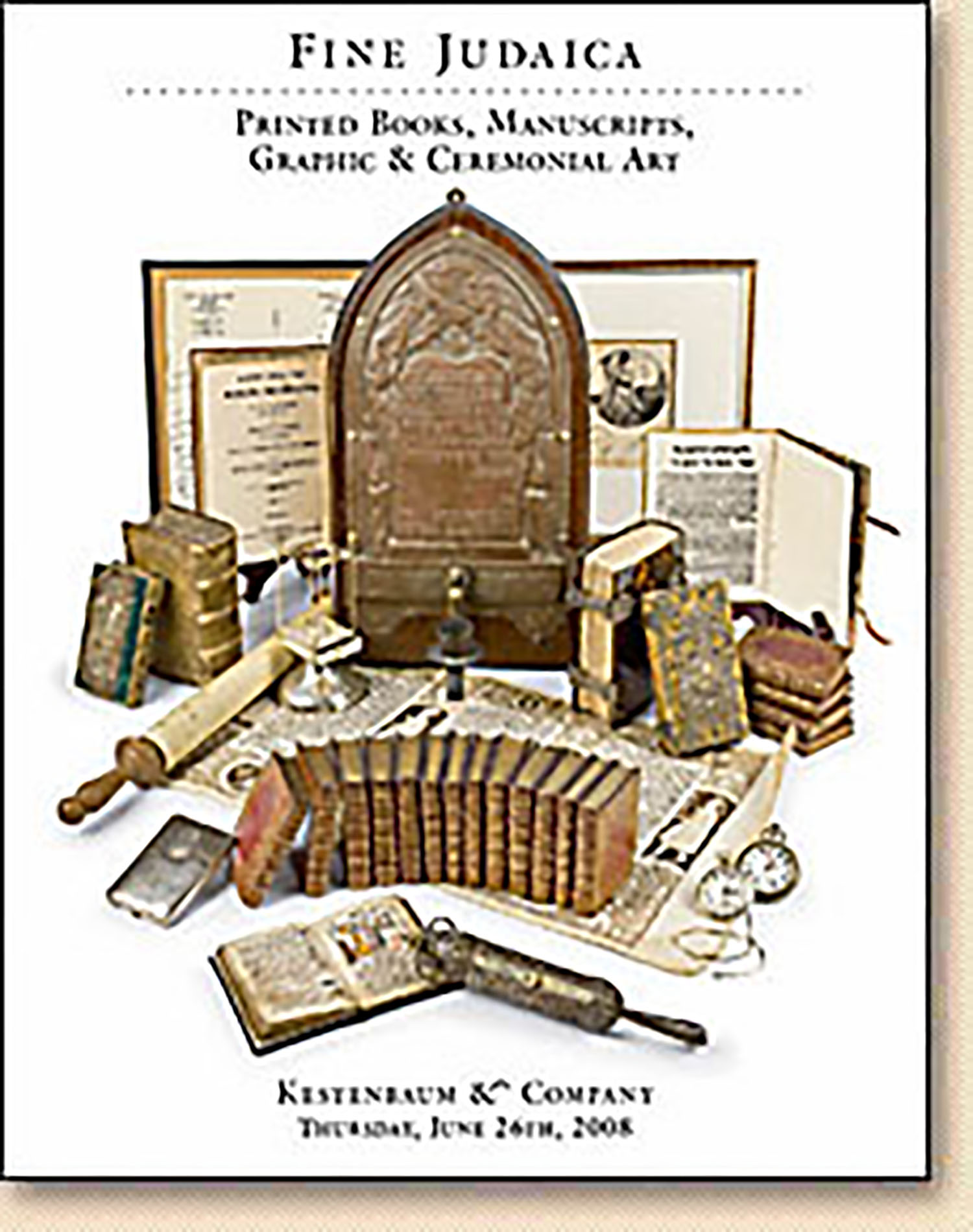Chazan, Israel Moses. Kuntres Kedushath Yom Tov [polemic against those seeking to abolish the Second Day of the Festival in the Diaspora]

AUCTION 40 |
Thursday, June 26th,
2008 at 1:00
Fine Judaica: Printed Books, Manuscripts, Autograph Letters, Graphic & Ceremonial Art
Lot 189
(POLEMICS)
Chazan, Israel Moses. Kuntres Kedushath Yom Tov [polemic against those seeking to abolish the Second Day of the Festival in the Diaspora]
Vienna: della Torre 1855
Est: $400 - $600
PRICE REALIZED $350
A Modernist's Defense of Tradition.
R. Israel Moses Chazan (1808-62), rabbi of Rome, and later Corfu and Alexandria, was the grandson of the Sephardic Chief Rabbi of Jerusalem, R. Joseph ben Chaim Chazan (1741-1819). Though a defender of the faith and a battler against Reform, R. Israel Moses was of a decidedly modernist bent, as reflected in various responsa in his collection Kerach shel Romi (Livorno, 1876).
The present polemical tract was written at the behest of the Rabbi of Mantua, R. Mordechai Halevi Morteira. A group of Mantuan merchants sought to open their stores on the second day of the Festival, which in the Land of Israel is considered a weekday. The institution of "yom tov sheni shel galuyoth" (the second festive day of the Diaspora) originated in ancient times when the calendar was based on the actual sighting of the new moon by witnesses who would testify before members of the Sanhedrin in Jerusalem. Communications being what they were, it would take time for the Babylonian Diaspora communities to be updated, thus was instituted a second festival day. The reformers argued that the observance nowadays is anachronistic. Rabbi Chazan demonstrates that halachically we do not have the liberty to abolish such enactments of the Sages. Our author adjures the Mantuan rabbi to follow in the footsteps of his distinguished ancestor, R. Saul Halevi Morteira of Amsterdam, author Giv'ath Shaul (f.33v.). (Chazan may be alluding to the fact that R. Saul Morteira played a part in the excommunication of his erstwhile pupil, the heretical philosopher Benedict de Spinoza.)
The booklet is prefaced by similar responsa by the Aschkenazic and Sephardic rabbis of Vienna, Elazar Halevi Hurwitz and Reuben Baruch.
See J. Faur, Rabbi Yisrael Moshe Hazzan: the Man and His Works (1978) [Hebrew], p. 31, no. 4; p. 67-72; A. Ya'ari, Shluchei Eretz Israel, pp. 729-732, 876; JE, Vol. VI, p. 288
